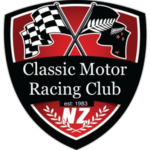The Chevy Coupe project is not forgotten, just delayed. In the meantime here is some more appetite whetting to fill the gap, being background notes on a few puzzles about these cars in general. The first of these is how come every now and then you will come across, say, a 1938 NZ registered Chevy that is from all appearances a 1939 model? Or how come all of the Kiwi Chevies have a beam front axle when independent front suspension was available in the USA from 1934 onwards? And how come we have no trouble finding 1939 Coupes but have a hard time finding any more until 1949 or so?




The first question comes down to model year timing. By the 1930’s the idea of “new” models for each year had taken root. No matter that mostly the new model was a tart up of the old one, there was status in having a “new” one. Tie this desire up with a national economy still dependent on agricultural production, autumn harvests and money in the kitty when the harvests came in (imagine New Zealand in the wool boom years) and it becomes worthwhile for the “new” model to appear in September, rather than in the January of the nominal model year. So the US factories were pouring the “new” model out in September of the year before, including those intended for export. There is plenty of time for early examples to reach New Zealand before 1 January, and plenty did. Styling wise over the years the grills got wider at the top and the headlights lights got moved out onto the mudguards, The early Coupes look a little sleeker than the later ones. This is because in ’38 the passenger turret was moved forward to clear the rear wheel arches and gain a little more backseat room by clearing the wheel arch intrusion, taking the A pillar and engine with it, plus a bit more for front seat foot space, All of which made the bonnet a little shorter. The imbeded shots depict the ’36 to ’39 styling changes. By ’39 they had alligator bonnets as well. No matter what they looked like how did they get here at all with a depression going on, our agricultural exports worth three fifths of five eights of nothing and big tariffs barriers to deal with?
The trick was called “import substitution.” This reduced expenses by building in as much local content as possible. To this end there were also nice friendly tariffs for British Commonwealth cars, and big ugly ones for anyone else. So if you were American then you shipped a set of right hand drive bits out of your Canadian factories, operated a CKD assembly plant in New Zealand and had Kiwis build as many of the ancillary bits as could be managed. Then, as now, the economics of this did not really stack up. In result the CKD kit contained no frills, so independent front suspension was not included. The Kiwi builds came with front beam axles, the same as those used on the vans and pick-up trucks in the states. Probably a good thing as Chevrolet’s 1930’s knee action independent front suspension was not up to much, and neither were their early wishbone attempts.
Then comes a war. The common impression on this is that no imports took place until the late 40’s, war material being more important than cars. Motor registration records don’t support this. New vehicle imports were not banned. The registration records show a dip only in the first two or so war years, the
rest still look fairly healthy. What did happen was that the Army expanded rapidly and was short on transport. The Government requisitioned all cars and (motorbikes) less than two years old sitting on car yards or in train at the assembly plants. (This edict did not apply to private cars, just ones awaiting buyers. Even so the old owners would still have been lucky to get their cars back at wars end). But that only takes us to 1945. What about the dearth of American cars on the register right up to about 1950? There was no shortage of new British cars going onto the register in this immediate post war period. The Poms were deep in war debt so export or die was the pommie call. They had markets aplenty as the other European makers were bombed out to one degree or another. The yanks were slow in converting back from military to civilian production and had a big backlog of local demand to fill so for them exports were not an immediate priority. The end result was that, just for a little while the Poms had the upper hand. By the early ’50s normal service had been resumed.
